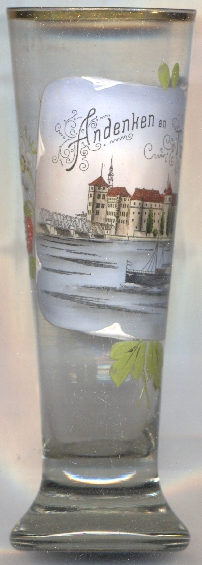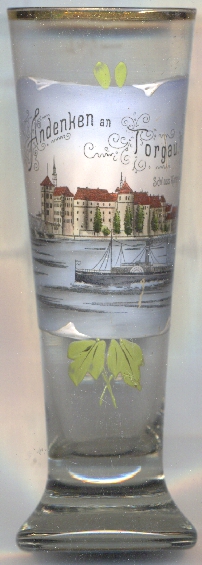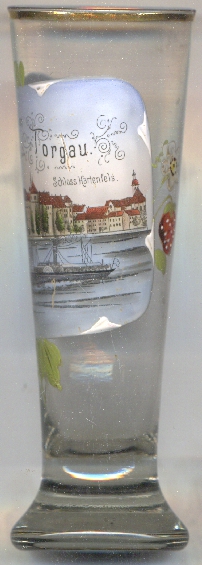

|
| DEUTSCHLAND | GERMANY |
| Bundesland: Freistaat Sachsen | Saxony |
| Landkreis: Nordsachsen |


 Torgau is situated at an elevation of 78 m on the left, western bank of the river Elbe in northern Saxony, about 50 km northeast of
Leipzig and about 77 km northwest of Dresden. The municipality has a population of about
19,600 (2021).
Torgau is situated at an elevation of 78 m on the left, western bank of the river Elbe in northern Saxony, about 50 km northeast of
Leipzig and about 77 km northwest of Dresden. The municipality has a population of about
19,600 (2021).
Torgove was first mentioned in 973. A market is attested in 1119. When the place became a city is not dated. At least from the year 1267 there is a note that speaks of the town of Torgau. The town was located on the important trade road, the via regia Lusatiae inferioris, between Leipzig and Frankfurt an der Oder that crossed the river Elbe at a ford east of Torgau. Torgau belonged to the duchy of Saxe-Wittenberg, which in 1356 was raised to be the Electorate of Saxony. After the last Ascanian duke died without issue in 1423, the Electorate passed to the Wettin dynasty, which took up its residence at Torgau. Following the partition of the Wettin dynasty with the Treaty of Leipzig in 1485, Torgau fell to the Ernestine line (see chart of the Wettin dynasty). The Ernestine electors of Saxony then had Hartenfels castle built as their residence. The Ernestine court resided mainly in Torgau and in Weimar. From 1525 onwards, Torgau became the sole residence. After the Battle of Mühlberg in 1547, Torgau fell to the Albertine line. The town is where during the World War II, United States Army forces coming from the west met forces of the Soviet Army coming from the east during the invasion of Germany on 25 April 1945, which is now remembered as "Elbe Day". After World War II, Torgau was initially a district centre within the state of Saxony Anhalt in East Germany. After the dissolution of the states of East Germany in 1952, it became part of the district Leipzig. In 1990, after the Unification of Germany, it became part of the Leipzig region of the state of Saxony. In 2008 it became the centre of the district Nordsachsen (Northern Saxony).
 Hartenfels castle [left, no. 4304] became the residence of the Ernestine line of the House of Wettin
after the partition of Wettin in 1485. The construction of the new residence started in the 15th century and was continued in the 16th century.
It is the largest completely preserved palace from the early Renaissance in Germany and one of the main works of the Saxon Renaissance. After the
Schmalkaldic War in 1547, the castle came into the possession of the Albertines, when the Ernestines, who ultimately lost in the conflict, had to cede
important possessions along with their electoral dignity. When the Albertines permanently moved their court to Dresden in the
16th century, the palace was mainly used as an administrative building. In 1815 it passed to the Kingdom of Prussia and was now used for the Prussian
administration of the newly formed Torgau district.
Hartenfels castle [left, no. 4304] became the residence of the Ernestine line of the House of Wettin
after the partition of Wettin in 1485. The construction of the new residence started in the 15th century and was continued in the 16th century.
It is the largest completely preserved palace from the early Renaissance in Germany and one of the main works of the Saxon Renaissance. After the
Schmalkaldic War in 1547, the castle came into the possession of the Albertines, when the Ernestines, who ultimately lost in the conflict, had to cede
important possessions along with their electoral dignity. When the Albertines permanently moved their court to Dresden in the
16th century, the palace was mainly used as an administrative building. In 1815 it passed to the Kingdom of Prussia and was now used for the Prussian
administration of the newly formed Torgau district.
[https://de.wikipedia.org/wiki/Torgau, https://en.wikipedia.org/wiki/Torgau;
https://de.wikipedia.org/wiki/Schloss_Hartenfels]
![[scale]](lineal.jpg)